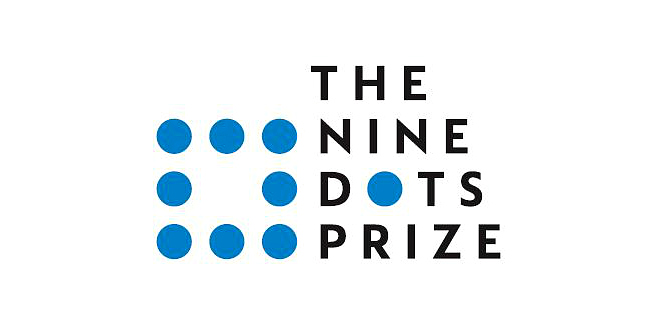 Funding requirements confirm there is a competitive advantage for research engaged in the active promotion of gender perspectives. Strategic decision-making in universities should also recognise the value a sex and gender dimension adds, both for funding and the quality of research. Curt Rice stresses how social sciences and humanities can help deliver these perspectives more deliberately and explicitly into research.
Funding requirements confirm there is a competitive advantage for research engaged in the active promotion of gender perspectives. Strategic decision-making in universities should also recognise the value a sex and gender dimension adds, both for funding and the quality of research. Curt Rice stresses how social sciences and humanities can help deliver these perspectives more deliberately and explicitly into research.
Last year, the world lost a great woman, a great feminist thinker and a great poet. Maya Angelou’s death has left us poorer when we attempt, as the cliché goes, to speak truth to power. A pragmatic quote of hers captures part of the mission we are trying to meet in this EnGendering Excellence seminar; it highlights part of the truth we are trying to speak. She said very simply: “Nothing will work unless you do.”
The Research Council of Norway and Norway’s Committee on Gender Balance and Diversity in Research have joined forces to make this event happen because we want to do our work. And we want to support you as you do yours. We want to better understand an important requirement in the Horizon 2020 research program — a requirement increasingly used around the world — but there is a bigger agenda, too. Horizon 2020 “shall ensure the effective promotion of the gender dimension in research [and assure that it] shall be adequately integrated … at all stages of the research cycle.” Your application will be evaluated on this point. A research team with the competency to include sex and gender perspectives can submit a stronger application and increase its chances of success.
That’s a simple interpretation of the phrase “competitive advantage” and perhaps it’s even cynical. But given the realities of the context in which we pursue funding for our research, it is important and deserves the decisive attention of leadership.
The competitive advantage
There’s another sense, though, in which incorporation of sex and gender perspectives gives a competitive advantage. We engage in research not only to enhance our understanding of our lives but to make them better. This is perhaps the ultimate test of quality in research — does the work you do contribute positively to improving the quality of life for others? This can be short-term or long-term; it can be abstract or concrete. “Quality of life” is a broad concept.
 Image credit: Perspectives by Unsplash (Pixabay) Public Domain
Image credit: Perspectives by Unsplash (Pixabay) Public Domain
Bringing the perspectives of sex and gender more deliberately and explicitly into research of many kinds increases the quality of research because it leads to results which have a greater impact when it comes to improving the quality of life for others. This reveals a profound mandate for researchers: Understand your environment, broadly and subtly construed, tell us about your discoveries, and in doing so, create circumstances for improving the human condition.
Instead of briefly mentioning specific examples here demonstrating the at times surprising relevance of sex and gender, let me point you to more comprehensive resources. Three good places to start are the websites of Gendered Innovations, genSET and genderSTE. You might also check the Gender Summit websites.
Bring in the humanities!
Given the breadth of examples we see, we can be confident that the requirement for over 100 topics in H2020 to include the gender dimension is surely just the start. Researchers and funders alike are starting to realize the quality connection. And while it may be easier to talk about medical research or perhaps even engineering, as a humanist, I know that Social Sciences and Humanities (SSH) must be present, too, in an interdisciplinary approach to solving today’s global challenges.
SSH perspectives can help us understand sex and gender differences in attitudes, beliefs, traditions and cultures and thereby better equip us to find solutions related to agriculture, transportation, energy, health and more.
In light of the competitive advantage and given the scientific case, we should also talk about policy. How should people in leadership positions respond to the requirements of H2020? How should they respond to the idea that there are many cases in which the quality of research would be better – the quality of life would be improved – if the sex/gender dimension were included?
A policy for success
One example of a policy measure can be found at the University of Tromsø. A few years ago, Tromsø received a national gender equality prize, acknowledging hard work over many years bringing us from being the worst university in Norway to being the best in Norway when it comes to the percentage of women in full professorships — from just under 10% to well over 30%.
We used those funds to start a new project, this time about gendered perspectives in research. This, too, by the way, is part of the work of gender equality, not least of all because making this aspect explicit sends a strong signal to young female researchers that the research teams they are considering joining care about making their results relevant for the entire population, and not just half of it.
Here’s what we did in Tromsø: We went out to all research groups on campus and told them that they could apply for funding to add an adjunct professor to their group. But in order to apply, we required that they participate in a seminar. Stanford’s Londa Schiebinger, founder of Gendered Innovations, graciously joined us and even at that seminar, we already experienced discovery and the formulation of hypotheses about new knowledge.
We received many applications and ultimately funded eight such positions for two years. A few weeks ago, we had the concluding seminar at which we heard results from many different fields about how adding a researcher with a special interest in gender or sex issues made the quality of their studies better.
Competition affects our work today: the competition for money and the competition for quality. When we get funding and achieve quality in our work, we have the opportunity to make lives better. If we do that well, we can augment another quote from one of Maya Angelou’s speeches, in which she said:
“It is time for parents to teach young people early on that in diversity there is beauty and there is strength.”
To that, we might add, that in diversity, there also is knowledge.
This is a slighty edited version of my speech at EnGendering Excellence, Oslo, June 5, 2015. This article was originally published on Curt Rice – Science in Balance. Read the original article.
Note: This article gives the views of the author, and not the position of the Impact of Social Science blog, nor of the London School of Economics. Please review our Comments Policy if you have any concerns on posting a comment below.
Curt Rice is a professor at the University of Tromsø. He is also the head of the board for Current Research Information System in Norway (CRIStin), which works to promote open access in Norway. He also leads Norway’s Committee on Gender Balance and Diversity in Research. As of August 1, 2015, he will be the Rector (President) of the Oslo and Akershus University College of Applied Sciences (Høgskolen i Oslo og Akershus).






